Alumnx Spotlights
Kevin Choi’s Need to Snack While WFH Led to a Dextrous Device
Support for Choi’s Snactiv has come from Kickstarter and the TV show Shark Tank.
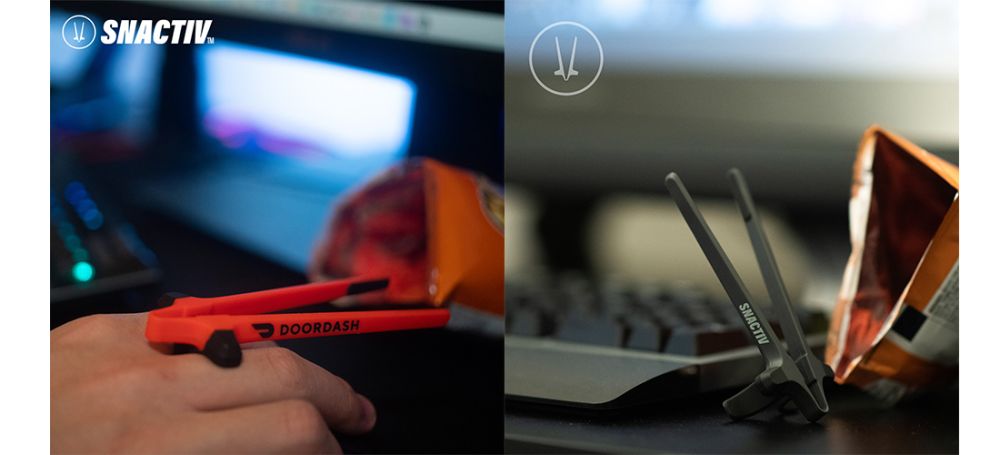
Kevin Choi, ’09 BFA Toy Design
I came up with my Snactiv idea years back when I found myself snacking while playing a game of Counter Strike. I only ever thought the idea could be useful for me, so I never went as far as creating a prototype or even a sketch for it because I was completely fine being a slob and clicking my mouse with my pinky finger when things got heated in the game. And to be quite honest, I loved licking my Cheeto fingers.
Fast forward to October 2019, I had just started WKC Designs, Inc., an industrial design consultancy business, and things were going well for me, even as a startup. I was busier than ever and most days I would need to snack and eat at my desk to keep up with all the work that was coming in. That’s when I noticed how disgusting my workspace started to look and feel. I had orange Cheeto stains all over my workspace, my keyboard was all greased up, and my shirts were starting to change in color—permanently! But the thing that got to me the most was that I, who thought I was saving time by snacking and eating at my desk, was spending more time licking and wiping my fingers than getting actual work done. And that’s when I knew there had to be a cleaner, better, and more efficient way for me to snack while I had things to get done.
So, what did I do? I googled “Clean way to snack without using my fingers.” I was certain there would be something out there already, but to my surprise there was no real solution, and the best one I had come up with were generic chopsticks. So I started using chopsticks while working to keep my area clean.
Weeks went by as I continued to snack/eat at my desk with chopsticks and that’s when I noticed the same inefficiency problem I saw before. I was spending more time picking up the chopsticks, aligning the chopsticks, grabbing the food item, eating, and then placing the chopsticks back down. The constant cycle of picking up, aligning, eating, and placing down was driving me crazy! Just writing it here is driving me crazy. And that’s when I said enough is enough and the very first Snactiv was born.
Snactiv is a patented, multi-tasking snacking tool of the future! You can think of them as an extra pair of fingers that sit on top of your actual fingers. With sticky, chopstick-like grips that you maneuver to pick up snack items, it keeps your fingers and tech devices clean and, most importantly, it frees up your hands so you can type, text, click, and swipe, streamlining your snacking experience while working or gaming.
All that said, I wasn’t expecting much out of Snactiv. It was basically meant for a problem I had while WFH. I wouldn’t and couldn’t have fathomed how many people had the same issues as I did. It started with my friends and family stating how much they needed something like Snactiv, and evolved to watching complete strangers fund my product on Kickstarter, and then finally going on ABC’s Shark Tank and getting an immense amount of exposure for my idea there as well.
As of March 2022, it’s been 11 months since our Kickstarter launch, and five months since our official launch date. In the short time that we have been live, we have partnered with corporate giants like Doordash, among others. These new partnerships will create one of the biggest marketing initiatives we have planned to help Snactiv become a household name. Today, we have done over $900K in sales and have frozen over $1.9 million dollars on more than 230 trademark and copyright infringers’ accounts (and still counting). Think of these 230 infringers as a sales team I never asked for—they sell their fake product, they get fined, and Snactiv continues to grow.
If you’re reading this and thinking of inventing something to introduce to the world, a word of advice: Be sure to protect your inventions pronto! Utility patents, design patents, the Patent Cooperation Treaty (PCT), national phase patents, trademarks, and copyrights are all equally important to fight infringers around the world. Don’t let your hard work go in vain!
Lastly, I would like to thank my family and kids for their patience, love, and support throughout this process. To my wife, SeoHyun (Sunny) Kim, also an Otis College alum (’09 BFA Toy Design), I want to thank her for all she has sacrificed, for believing in me, and letting me chase after my dreams.
Choi is the president and founder of Inoobi, Inc., the company behind Snactiv. He also has worked at Disney Consumer Products, Hasbro, and Fuhu, a start-up company that was acquired by Mattel. You can follow Snactiv on Instagram, @snactiv.
Alan Nakagawa’s Installation Celebrates “Orphan Objects” at the USC Pacific Asia Museum
The multimedia artist also made his installation more accessible after attending a lecture on museum accessibility.
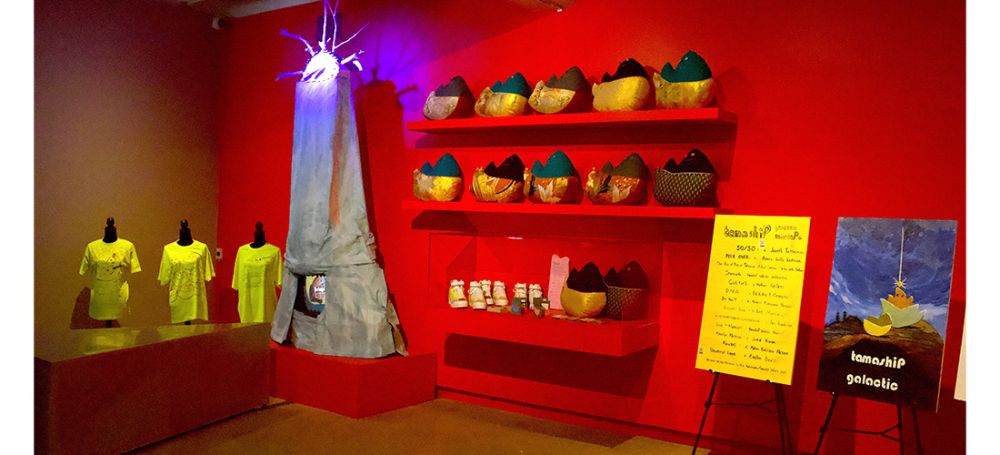
Alan Nakagawa, ’86 BFA Fine Arts
tamashiP galactic was a multimedia installation I created for a 50th anniversary exhibition at the USC Pacific Asia Museum in Pasadena, California that ran from November 2021 to February 2022. The show, titled Interventions: Fresh Perspectives After 50 Years, included original responses to the museum’s collection and was curated by Rebecca Hall.
We were given 12 months to research the collection and create a new work in response to whatever we gravitated to. I had a meeting with the museum’s Collection Manager, Annie Lee. It was through Annie that I learned about a group of objects that were obtained by the museum before they had a proper registrar system, so these objects had no data and therefore were not of value to the museum—no date of acquisition, how they were obtained, no background information. When I heard that there were 2,400 of these objects and that the museum was planning to get rid of them, I called them “orphan objects” and decided to focus on them for my contribution to the group show.
What I developed was a fake sci-fi movie where the protagonists in the story were selected to fly not just these 2,400 objects, but every orphan object from every museum on earth, to a parallel universe where museums don’t care if there’s no background data to objects. My installation was mimicking a movie theater lobby that displayed schwag and memorabilia from this imaginary movie, i.e. the spaceship used in the movie, a movie poster, and merchandise like t-shirts, stickers, custom wallets, and high-top sneakers. I also collaborated with Pasadena-based sewing club, Sumire Kai, which fabricated a dozen dolls of the main character from the fake movie, Sarcie.
There’s also a soundtrack to the movie, which played on a loop coming out of the spaceship. In the belly of the spaceship is a video monitor that shows a loop of 240 of the 2,400 orphan objects, the soundtrack, and the lyrics to each song, much like a karaoke screen. I wrote and recorded a dozen songs that supported the narrative of the fake sci-fi movie. I tried to compose an eclectic group of songs. I also asked friends who sing to record the vocal tracks to each song to make it appear that each song was a different artist/band.
I was inspired by a workshop the museum produced early on about museum accessibility, which was a dialogue between Museum Accessibility Designer Amanda Cachia and accessibility advocate and author Alice Wong. At the end of this amazing Zoom lecture Amanda said, “Basically, we can’t wait for policy changes or legislation, we simply have to start making the change ourselves.” I decided to design my installation with many of the design points discussed during the event. The museum also arranged a meeting with Amanda, which was highly educational for me. I made adjustments in my installation, i.e. the sight line was lowered by 10 inches to accommodate visitors in wheelchairs and those who might benefit from a lower sight line than what is standard at museums. Everything that was text in my installation also had a QR code for accessible audio. The music from the spaceship was also coming out of an aluminum sound bed in front of the ship, which visitors were encouraged to sit on or touch. You could feel the vibrations of the music. It was my first time trying to be aware of accessibility issues in my installation art and I hope to learn more as I continue to present my work.
Nakagawa was recently interviewed by Devin Tsuno in the Los Angeles Times. He’s in his fourth year as the artist-in-resident at the Pasadena Buddhist Temple through Side Street Projects, creating work related to the history of the temple and the Post-WWII Japanese American community that founded it. He has a book by Writ Large Press coming out this fall that documents the artistic journey that led to his nine residencies in six years. You can find out more about Nakagawa at this link, and follow him on Instagram, @nakagawa2015.
Carlyle Nuera Pieces Together a Personal Project with the Literal Fabric of His Filipino Roots
His 21K followers on Instagram know him as the creator of fabulous Barbie doll designs, but here Nuera shares his more personal work.

Carlyle Nuera, ’10 BFA Product Design
This is “U.S.ako,” a flag in the formation of the American flag, but in the colors of the Pride flag and made with Filipino materials. It’s a visual allegory of being Filipino and American and queer all at the same time. Of being the child of immigrants trying to fit into spaces that were not made for you. Of not feeling like one particular flag represents you.
“Ako” of course means “me” or “I.” When I think about my own history, about how my family ended up building our lives here in the U.S., it all goes back to my grandpa Tate, my mom’s dad. He was half-Filipino, half-white, and had U.S. citizenship through his American dad. It was through my grandpa’s U.S. citizenship that my mom and her siblings immigrated to the U.S. at different times. That’s how it came to be that my older siblings were born in the Philippines and I was born here in the U.S. My mom used to joke that because I was U.S.-born I could be president, but I went to art school and became a Barbie designer at Mattel instead.
My grandpa Tate passed away in October 2013; the old white t-shirt on the flag is one of his that he used to always wear at home. He was part of my entire family’s immigration, so he’s part of this flag’s narrative and physicality. The stars are made of capiz shells, a material common in Philippine home décor, like parols at Christmastime. In my head I was hoping they’d be perfect stars, but they broke and cracked and were difficult to cut. They weren’t meant to be cut into stars, the way we weren’t always meant to fit into strict rules of what an “American” is. The stripes are made of different fabrics from different regions in the Philippines: Binakol from the Ilokanos and Itneg communities of Ilocos and the Cordillera region; Hablon from the Argao people in Cebu province; Abaca Pinangabol from the Daraghuyan community from Bukidnon; and Tiniro from Mang Abel Ti Abra in Abra, Ilocos Norte.
Nuera is a Lead Designer at Barbie Signature, having worked at Mattel for over 11 years. He has designed the Holiday Barbie three times, in 2017, 2018 and 2021, and also designed the A Wrinkle in Time and Mary Poppins Returns Barbie collections, among other movie tie-ins. The Filipina Mutya Barbie he designed as part of the Global Glamour Collection was inspired by his mother, and the Naomi Osaka Barbie, which he designed as part of the Role Model series, sold out within hours of its launch. In 2019 Nuera was awarded the Global Pinoy Award for Design by One Mega Group, a Filipino content publishing company. You can follow Neura on Instagram, @carlylenuera.
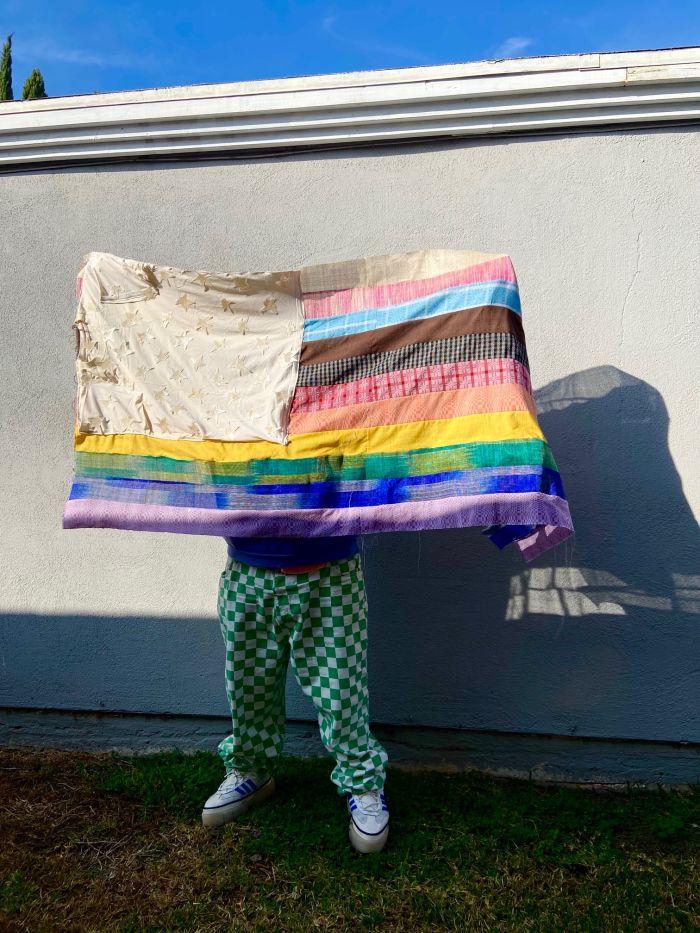

Jessica Silverman’s Eponymous Gallery in San Francisco Opens a New, Larger Space
The Chinatown space is almost double the size of its former location.
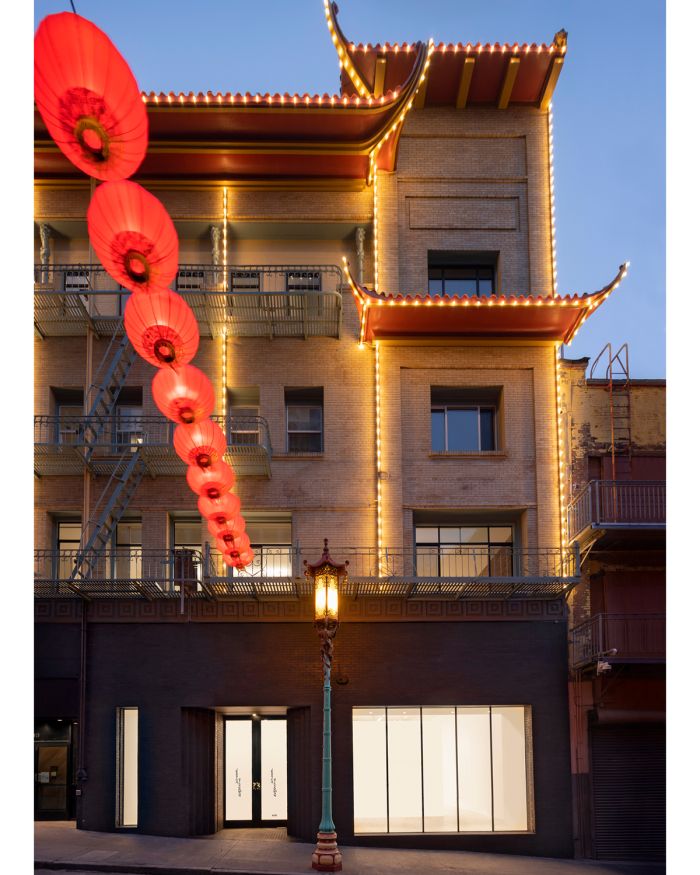
Jessica Silverman exterior, courtesy of Jessica Silverman, San Francisco; photo by Henrik Kam.
Jessica Silverman, ’05 BFA Fine Arts
In January 2020, I signed a new lease at 621 Grant Avenue in San Francisco, and in February 2020, I started demo. As we all remember, things started shutting down in March 2020, which meant that the renovation of my new gallery would be delayed. Materials were behind, factories had COVID breakouts that caused interruptions, and the permit process was incredibly slow. Thankfully, with much persistence, we finished our new gallery construction in April 2021. Seeing this vision through from start to finish was incredibly rewarding. This new space is double the size of my old one, is closer to downtown, and is a much better working environment. It is also a space that our artists love making exhibitions for. Our lighting is versatile, our ceilings are high, and the volume of the space is ambitious. Our business had grown so much that this new space was needed for our continued success. It seems that the saying, “If you build it, they will come,” is true.
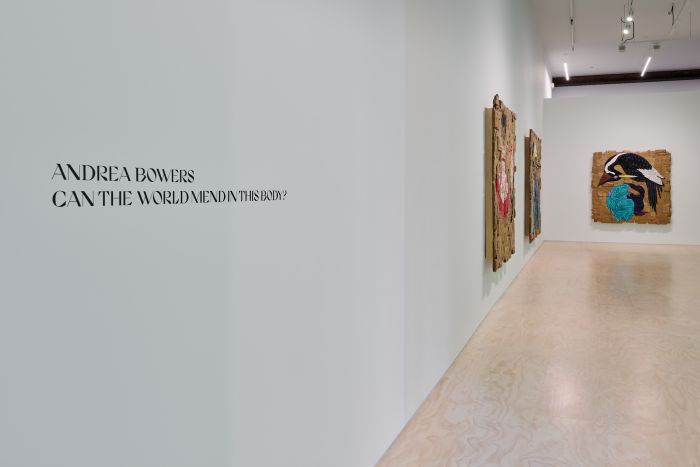
Installation view of Andrea Bowers’s Can the world mend in this body? at Jessica Silverman, San Francisco, 2022. Image courtesy of the artist and Jessica Silverman, San Francisco. Photo by Glen Cheriton/Impart Photography.
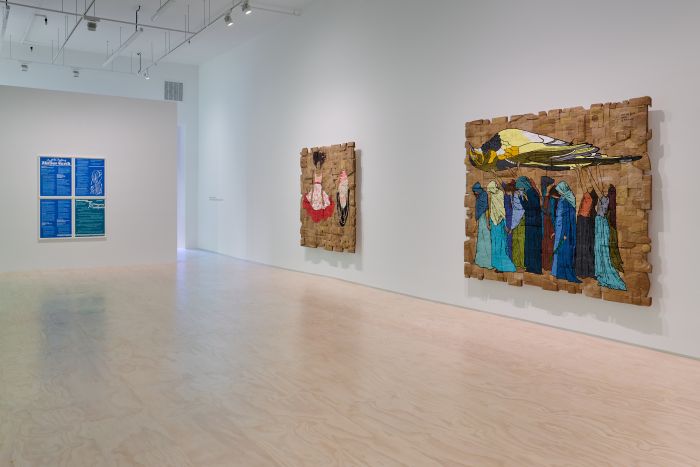
Installation view of Andrea Bowers’s Can the world mend in this body? at Jessica Silverman, San Francisco, 2022. Image courtesy of the artist and Jessica Silverman, San Francisco. Photo by Glen Cheriton/Impart Photography.

Installation view of Andrea Bowers’s Can the world mend in this body? at Jessica Silverman, San Francisco, 2022. Image courtesy of the artist and Jessica Silverman, San Francisco. Photo by Glen Cheriton/Impart Photography.
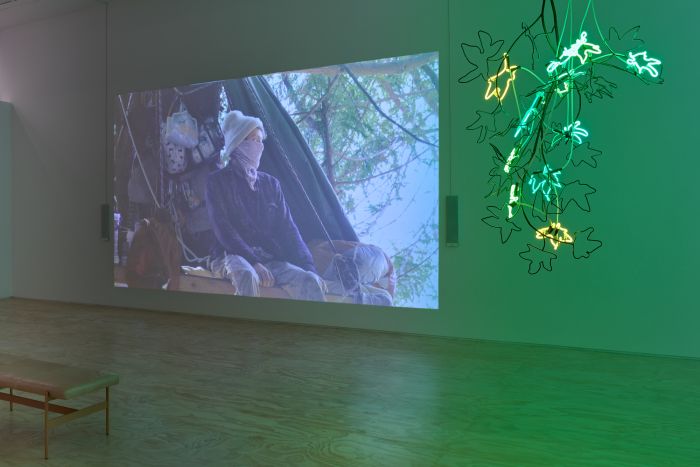
Installation view of Andrea Bowers’s Can the world mend in this body? at Jessica Silverman, San Francisco, 2022. Image courtesy of the artist and Jessica Silverman, San Francisco. Photo by Glen Cheriton/Impart Photography.
Jessica Silverman showed the work of Andrea Bowers, a faculty member in Otis College’s MFA Fine Arts program, through April 23, 2022. The gallery also participated in the Frieze L.A. and EXPO Chicago art fairs. When the new gallery space opened, ARTNews called Jessica Silverman “one of the country’s leading galleries.” You can follow the gallery on Instagram, @jessicasilvermangallery.

